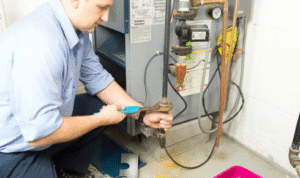If you’ve ever worked on a construction site, you know how chaotic it can get. Deadlines shifting like sand, unexpected costs piling up, and the never-ending task of juggling contractors, clients, and suppliers. It’s like conducting an orchestra where half the instruments are out of tune. That’s why the rise of construction project management software isn’t just a trend — it’s survival.
I’ve seen both sides of the industry: the dusty paper-trail way and the cleaner, more transparent digital workflow. And let me tell you, once you move from spreadsheets and sticky notes to a software-driven approach, there’s no going back. The efficiency speaks for itself, but the real game-changer is peace of mind.
Getting to Grips with Digital Demos
When you’re shopping for new tools, it’s easy to be dazzled by flashy websites and promises of “seamless integration.” But the truth is, you only know what works once you’ve tested it yourself. That’s where something like a SmartPM demo comes in. Instead of reading marketing jargon, you actually get to see how the platform manages scheduling, risk tracking, and reporting in real time.
These demos are underrated. They give you a chance to ask awkward, real-world questions: What happens if a subcontractor misses their deadline? Can I compare baseline schedules to actual progress without pulling my hair out? If the software answers those questions smoothly, you’re on to something.
Why the “Best” Software Isn’t One-Size-Fits-All
It’s tempting to type “best construction project management software” into Google and pick the top result. But here’s the catch: the best tool for a multi-billion-dollar infrastructure project isn’t necessarily the right fit for a smaller residential builder.
For some, the priority is cost control. For others, it’s reporting dashboards that keep investors in the loop. And sometimes, it’s as simple as having a mobile-friendly app because most of your day is spent walking around job sites. The best solutions adapt to your scale and workflow, not the other way around.
I’ve noticed that smaller teams often thrive with lighter, cloud-based options, while big enterprises need heavier systems that plug into everything from payroll to compliance. The “best” is always about alignment with your specific headaches.
The Elephant in the Room: Pricing
No conversation about software is complete without talking about cost. It’s where even the most promising solution can fall flat. Many providers will lure you in with entry-level plans, only for you to realise that the actual features you need sit behind a paywall. Transparency matters here — no one likes hidden costs creeping in halfway through a project.
When you start comparing construction project management software pricing, don’t just look at the monthly fee per user. Factor in the learning curve, training costs, and potential downtime during the transition. Sometimes paying a bit more upfront saves thousands in delays and inefficiencies later.
I’ve seen companies obsess over shaving $20 off a subscription, only to lose far more in man-hours because the system they chose wasn’t intuitive. It’s a reminder that software pricing isn’t just about numbers on a page — it’s about value delivered on the ground.
Beyond Features: Culture and Adoption
Here’s a dirty secret: even the best tool in the world is useless if your team refuses to use it. Adoption is the hidden battlefield. You can roll out the sleekest platform, but if field workers find it clunky, they’ll default back to WhatsApp messages and handwritten notes.
That’s why buy-in matters. Teams need to feel like the software is there to make their jobs easier, not just add another layer of reporting for the bosses. This is where leadership steps in: setting expectations, offering training, and showing quick wins. When workers see how much faster they can pull data or update tasks, they usually stop resisting.
Risk Management: The Silent Hero
If there’s one area where digital tools shine, it’s risk tracking. Traditional construction projects often suffer from what I call “creeping chaos” — little delays that snowball until suddenly you’re three months behind. A good platform spots those red flags early, whether it’s manpower shortages, material delays, or unrealistic scheduling.
Think of it as having a radar for your project. Instead of reacting when problems hit, you’re anticipating them. That kind of foresight isn’t just useful — it can be the difference between delivering profitably and bleeding money.
Reporting Without the Headaches
Let’s talk about reports for a second. If you’ve ever stayed up late piecing together Excel sheets for a client presentation, you know how draining it can be. Modern platforms automate a huge chunk of that pain.
The beauty of automated reporting isn’t just time saved — it’s accuracy. No more typos creeping in or last-minute panics about whether the data is up to date. Reports can be shared with stakeholders in real time, which cuts down on endless back-and-forth emails. It creates a transparency that keeps everyone accountable.
The Future: Smarter, Leaner, More Predictive
We’re heading into an era where construction software doesn’t just track progress — it predicts outcomes. Artificial intelligence and machine learning are quietly reshaping the field, making forecasts sharper and insights more actionable.
Imagine a system that not only tells you a project is slipping but also suggests the exact resource adjustments to get it back on track. That’s the kind of capability we’ll see become mainstream. For builders, it means less firefighting and more proactive decision-making.
Final Thoughts: Choosing with Clarity
At the end of the day, construction is still about people building things. Software doesn’t replace that human grit, but it can take away unnecessary friction. My advice? Don’t get blinded by shiny features. Focus on how the tool solves your specific bottlenecks.
Start with demos, ask the hard questions, and don’t be afraid to walk away if a platform feels overengineered or overpriced. The right fit will feel natural, not forced.
Technology should make life easier, not more complicated. In the construction world, where every delay carries a price tag, that ease can be the competitive edge you didn’t know you needed.


